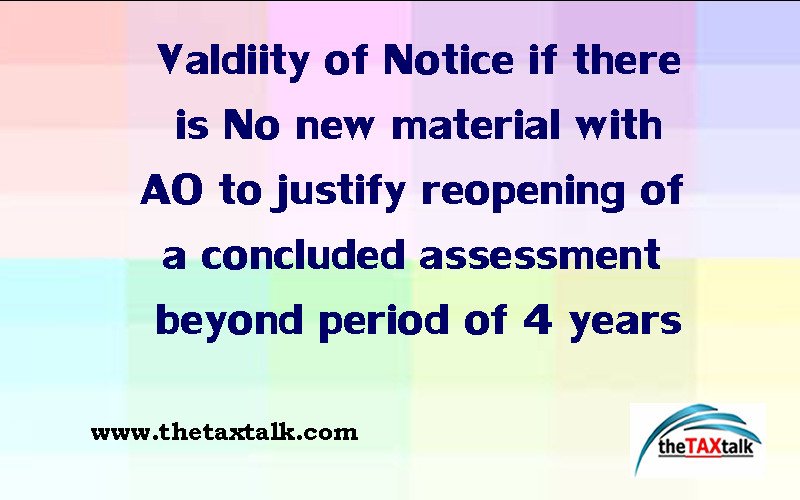![]()
Valdiity of Notice if there is No new material with AO to justify reopening of a concluded assessment beyond period of 4 years
Short Overview In the absence of failure on part of assessee to fully and truly disclose all material facts necessary for assessment, reopening of assessment beyond four years was hit by proviso to section 147 and was, therefore, set aside.
AO reopened assessment after expiry of four years from the end of relevant assessment year so as to disallow excess deduction claimed under section 36(1)(viia).
It is held that All details regarding deduction claimed under section 36(1)(viia) were available with AO during the course of original assessment proceedings. Also reasons recorded for reopening of assessment suggested that there was no failure on part of assessee to fully and truly disclose all material facts necessary for assessment. Further, reasons recorded revealed that, there had been no new material available with AO which could justify reopening of a concluded assessment beyond period of 4 years. Accordingly, reopening was hit by proviso to section 147 and was, therefore, set aside.
Decision: In assessee s favour.
Followed: CIT v. Kelvinator India Ltd. (2010) 320 ITR 561 (SC) : 2010 TaxPub(DT0 1335 (SC)
IN THE ITAT, BANGALORE BENCH
B.R. BASKARAN, A.M. & BEENA PILLAI, J.M.
District Co-Operative Central Bank Ltd. v. Asstt. CIT
ITA No. 551/Bang/2019
30 March, 2021
Appellant by: S. V. Ravishankar, Advocate
Respondent by: Priyadarshi Mishra, Additional Commissioner (Departmental Representative) (ITAT)
ORDER


